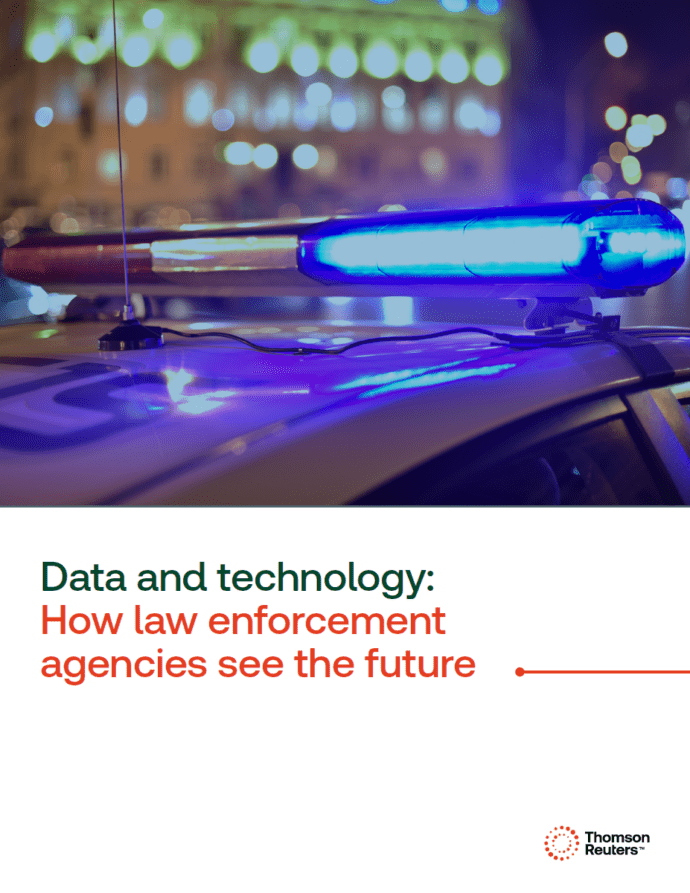Law enforcement agencies across the country are striving to create an atmosphere of mutual support, trust, and reliance within the communities they serve. This can be a challenging set of tasks, however, especially in an environment of increased scrutiny on police departments.
Fortunately, there are new technology tools available that law enforcement can use to address their most crucial challenges around issues of staffing, declining morale, data analysis, technology adoption, and the ongoing need to build community trust.
Let’s look at how already available technology can help to solve these five challenges.
1. Law enforcement staffing shortages
Like many other professions, law enforcement was not immune to the workplace pressures of the pandemic and the largely expected wave of retirements and resignations that came in the wake of it.
A survey of law enforcement agencies, conducted by the Police Executive Research Forum, showed that, on average, agencies are filling only 93% of the authorized law enforcement positions available. Also, there were fewer new hires of officers than the previous year, resignations increased by 18%, and retirements increased by 45%.
For many police departments, the lack of staffing has forced them to reduce proactive police work in order to respond to the volume of incident calls. Often, detectives who normally investigate criminal cases had to suit up and go out into the field as part of the regular force.
Fortunately, technology can offer a solution to this staffing hardship. First, analysis of large sets of crime and staffing data can allow departments to more accurately forecast crime, and deploy police officers where they are most needed to best utilize resources and keep the community safe.
Further, there are advanced public record search platforms, like Thomson Reuters CLEAR, that allow thinly stretched departments to make the best use of investigative officers’ time by improving their efficiency and effectiveness and giving them access to billions of data points within public records with which to conduct their investigations.
2. Declining officer morale
Like the strain on law enforcement personnel and resources caused by staff shortages, those officers that do stay on the force are facing a marked decline in their overall morale, with concern about their effectiveness and their perception within the communities they serve.
Yet, technology offers a similar solution here as well. The use of data analysis systems to access vast amounts of public information, including historical crime data, incident reports, staffing information, and community demographics, can allow police departments to deploy their resources efficiently. And by engaging predictive policing computer systems to conduct deep analysis, departments can yield valuable information to more effectively reduce crime rates and boost community support.
Using data analysis in this way can go a long way to establishing the trust a community may feel toward its law enforcement partners. And that alone can boost the morale of officers in such communities.
3. Data for crime prevention and active investigations
Advanced use of information technology has been shown to predict and prevent crime, and the ability of law enforcement to receive data in real-time can be extremely valuable. Investigators and officers need fast, accurate information to do their work efficiently — and having access to real-time and historical data improves both officer and community safety.
For example, Thomson Reuters CLEAR supplements and supports active police investigations by providing public and proprietary data, including live gateway data, that can add valuable insight into suspects and bring investigations to a more focused and quicker conclusion.
4. Officer accountability & community trust
Information and data analysis that is available to officers and investigators goes far beyond what simple surveillance — either by cameras or officers themselves — can do. Leveraging these data and technology platform solutions can give law enforcement agencies a leg up when it comes to understanding the level and types of crime in their community and the nearby region.
This pays further dividends because this kind of deeper community understanding allows for more effective policing that can reduce negative police incidents. In turn, this makes each individual member of the community more likely to trust police and provide information that can help lead to an arrest and prevent additional crime.
5. Adoption of new law enforcement technology
Police departments across the country are rapidly adopting many of these new data analysis and public record search technologies in order to enhance their investigative work and make the most of the limited resources they have.
In fact, as more departments begin to show positive results in proactive crime prevention and improved community relations because their investigations have become more focused and efficient through the use of services like Thomson Reuters CLEAR, it will make it easier for other police departments to make the case that such tech- and data-driven solutions will have widespread benefit in their own community.
CLEAR support for law enforcement
Law enforcement agencies are experiencing unprecedented stresses at this time, but the use of critical technology around data analysis and public record searches can speed up investigations, help alleviate officer fatigue and low officer morale, and ultimately help keep communities safer.
Thomson Reuters CLEAR investigation software is a solution that allows police to locate people quicker, reveals connections sooner, and more quickly closes the gaps in police investigations.

White paper
Discover the solutions that law enforcement agencies must consider to follow the fast pace of the era
Access white paper ↗








